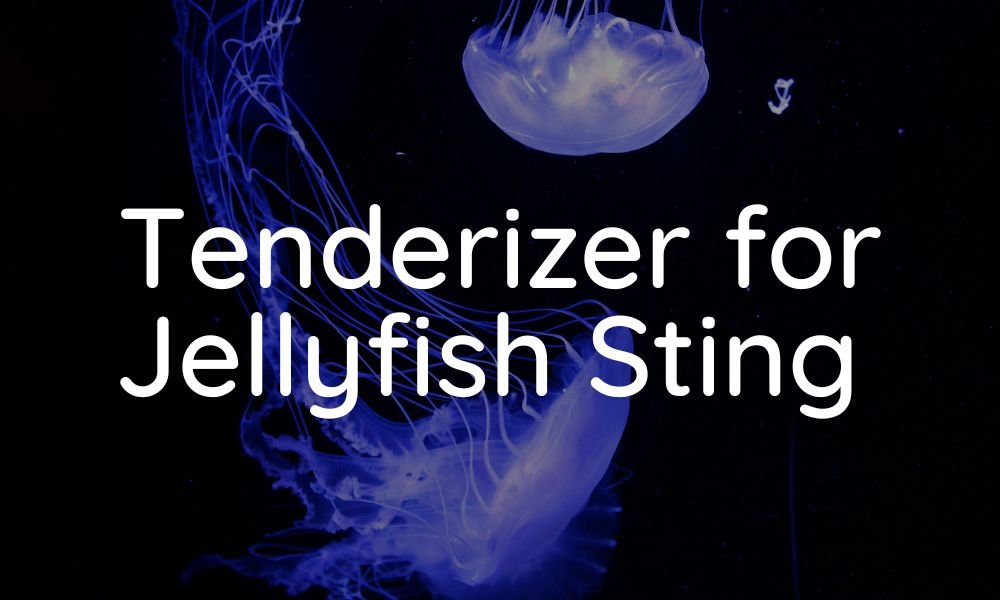Many mishaps can happen in everyday life, and of course, there are several solutions to each. For instance, we’re getting stung by a fierce jellyfish.

However, does a tenderizer sound like a suitable solution to jellyfish sting? The shortest answer is YES! The venom in jellyfish sting is formed of protein, which breaks down when we apply tenderizer as an ointment over it. It is a magical ointment because tenderizers contain an enzyme, papain, which helps lower down pain, burning, and itching.
However, we always recommend treating your jellyfish sting as soon as possible before it gets out of hand.
Let’s read more about making the tenderizer paste for a jellyfish sting and for how long you should keep it on!
How Do You Use a Tenderizer for a Jellyfish Sting?
Don’t sprinkle the tenderizer powder over your jellyfish sting out of the box.
First, make sure your meat tenderizer contains Bromelain or Papain since only these enzymes can tear down the proteinaceous venom.

To properly apply meat tenderizer on the sting, create a thick meat tenderizer paste by mixing it with vinegar or water. Then immediately apply this ointment over the sting and wash it off after some time.
Can We Use a Tenderizer for Bee and Wasp Stings?
Absolutely yes! Meat tenderizer works the same on the bee and wasp stings as it does on a jellyfish sting. As before, read your tenderizer’s ingredients, whether it contains bromelain or papain.
If it does, mix one part of it with four parts of vinegar or water. Apply this mixture over the sting and let it rest for 30 minutes. Then wash it off.
Conclusion
Besides making your meaty dishes incredibly chewable and flavorful, there is an excellent use of tenderizers for jellyfish, wasp, and bee stings.
If you haven’t left the wound for longer, better use a tenderizer. Otherwise, go for a proper checkup.







